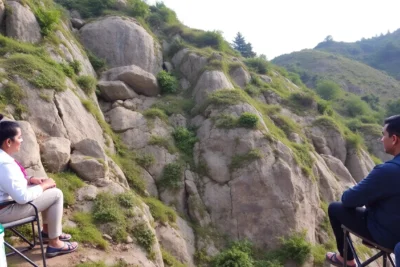
- What Makes Sagrada Familia a Must-See in Barcelona?
- The Architectural Marvel of Sagrada Familia: Gaudí's Vision
- Exploring the History and Significance of Sagrada Familia
- Visiting Sagrada Familia: Tips for Tourists
- Understanding the Symbolism Behind Sagrada Familia's Design
- The Ongoing Construction of Sagrada Familia: A Journey Through Time
The Sagrada Familia is not just a basilica; it is a masterpiece of architecture and an emblem of Barcelona's rich cultural heritage. Designed by the renowned architect Antoni Gaudí, this iconic structure has captivated millions of visitors with its intricate details and towering spires.
In this article, we will delve into the fascinating history and significance of this extraordinary monument. Join us as we answer the question “What is Sagrada Familia? Exploring Barcelona's Iconic Landmark” and uncover the secrets behind its ongoing construction and artistic brilliance.
What Makes Sagrada Familia a Must-See in Barcelona?
One of the key reasons the Sagrada Familia is a must-see in Barcelona is its unique architectural style. Blending Gothic and Art Nouveau elements, Gaudí created a structure that defies conventional design principles. The basilica’s organic shapes and vibrant colors, inspired by nature, invite visitors to explore the seamless integration of architecture and the natural world.
Additionally, the Sagrada Familia offers a rich narrative through its symbolism and intricate details. Each façade tells a story, with sculptures representing various biblical events and figures. The Nativity façade, for example, depicts the birth of Jesus, while the Passion façade reflects his suffering and death. This meticulous attention to detail allows visitors to engage with the faith and artistry behind the monument.
Furthermore, the ongoing construction of the Sagrada Familia serves as a testament to Gaudí's vision and ambition. Expected to be completed in 2026, the centenary of Gaudí's death, this project represents a blend of historical craftsmanship and modern techniques. Visitors can witness artisans at work, ensuring that the basilica remains faithful to Gaudí's original plans while incorporating contemporary innovations.
Lastly, the breathtaking views from the towers of the Sagrada Familia provide an unparalleled perspective of Barcelona. Climbing to the top allows visitors to appreciate the cityscape and the surrounding landscape, making it a truly unforgettable experience. This combination of artistic brilliance, historical significance, and stunning vistas makes the Sagrada Familia an essential part of any trip to Barcelona.
The Architectural Marvel of Sagrada Familia: Gaudí's Vision
The Sagrada Familia is an architectural marvel that embodies Antoni Gaudí's unique vision. His innovative approach to design merges natural forms with religious symbolism, creating a structure that feels both organic and celestial. Gaudí sought to mimic nature's patterns, which is evident in the basilica's flowing lines and intricate details that invite contemplation and awe.
One of the most striking aspects of the Sagrada Familia is its use of light and color. Gaudí meticulously planned the placement of windows to allow natural light to flood the interiors, enhancing the emotional experience for visitors. As the sun traverses the sky, the light changes within the basilica, creating a dynamic atmosphere that reflects the spiritual journey of its architecture.
Furthermore, the Sagrada Familia showcases Gaudí’s pioneering use of geometry and structure. He employed hyperbolic paraboloids, helicoids, and other complex shapes that challenge traditional architectural norms. This innovative approach not only enhances the aesthetic appeal but also ensures structural integrity, making the basilica a testament to both artistic and engineering excellence.
In addition to its architectural significance, the basilica remains a living project, continuously evolving under skilled artisans dedicated to preserving Gaudí's legacy. As visitors explore the site, they witness the blend of historical craftsmanship and modern technology, a true reflection of Gaudí's enduring vision and ambition for this iconic landmark.
Exploring the History and Significance of Sagrada Familia
The Sagrada Familia's history dates back to its groundbreaking in 1882, a project initially designed by architect Francisco de Paula del Villar. However, after a year, Antoni Gaudí took over, transforming the basilica into a unique vision that reflects his deep connection to nature and spirituality. His involvement ensured that Sagrada Familia would be more than just a church; it would become a symbol of Barcelona's architectural identity.
Throughout the years, the Sagrada Familia has faced numerous challenges, including funding issues and the Spanish Civil War, which halted construction for years. Despite these setbacks, Gaudí's plans have guided the ongoing work, and the basilica is now a UNESCO World Heritage Site, recognized for its cultural significance. This status underscores its role as a vital piece of not only Catalan heritage but also global architecture.
Visitors to the Sagrada Familia often marvel at its elaborate facades, each rich with symbolism that narrates biblical stories. The Passion façade, with its stark and dramatic sculptures, contrasts with the Nativity façade, which celebrates the joy of Christ's birth. This duality in storytelling enhances the basilica's significance as a place of worship and reflection, allowing guests to engage with its spiritual essence.
- Architectural Innovation: The use of hyperbolic paraboloids and other unique shapes exemplifies Gaudí's radical approach.
- Natural Integration: Gaudí's designs reflect a deep admiration for nature, evident in organic forms and motifs throughout the structure.
- Ongoing Construction: The basilica is expected to be completed in 2026, marking 100 years since Gaudí's death, blending historical craftsmanship with modern techniques.
- UNESCO Status: Recognized for its architectural and cultural significance, it attracts millions of visitors each year.
Visiting Sagrada Familia: Tips for Tourists
When planning your visit to the Sagrada Familia, it is essential to book your tickets in advance. This iconic landmark attracts millions of tourists each year, and purchasing tickets online can help you avoid long queues. Consider selecting a time slot that aligns with your schedule to make the most of your visit. Guided tours are also available, providing valuable insights into Gaudí's vision and the basilica's rich history.
Another tip for tourists is to visit early in the morning or later in the afternoon. During these hours, you can experience the Sagrada Familia with fewer crowds, allowing for a more intimate exploration of its stunning architecture. Additionally, the changing light at these times can enhance your experience of the basilica's intricate details and vibrant colors.
Don’t forget to take advantage of the audio guides available on-site. These offer in-depth explanations of the various facets of the basilica, including the symbolism behind its sculptures and the significance of its architectural features. This immersive experience will deepen your appreciation of Gaudí's work and the overall atmosphere of the Sagrada Familia.
Lastly, if you plan to climb the towers, make sure to check the weather forecast. The views from the top are breathtaking, but visibility can be affected by fog or rain. Bring a camera to capture the stunning panoramas of Barcelona, and allow yourself to fully absorb the spiritual essence of this remarkable monument as you gaze down upon the city.
Understanding the Symbolism Behind Sagrada Familia's Design
The design of the Sagrada Familia is deeply imbued with symbolism, reflecting Gaudí's spiritual beliefs and artistic vision. Each element of the basilica serves a purpose beyond mere aesthetics; it embodies profound religious meanings. For instance, the three grand façades—Nativity, Passion, and Glory—represent different aspects of Christ's life and mission, inviting contemplation and reflection from visitors.
Gaudí also drew inspiration from nature, which is evident in the organic shapes and forms throughout the basilica. The columns resemble trees, branching out to support the roof, creating a forest-like atmosphere inside. This design not only enhances the structural integrity of the building but also symbolizes spiritual growth and connection to the divine. The integration of natural elements allows visitors to appreciate the beauty of creation as they explore the sacred space.
Furthermore, the use of light plays a crucial role in the overall experience of the Sagrada Familia. Gaudí carefully positioned windows to capture sunlight, creating a dynamic interplay of colors that shift throughout the day. This intentional design mirrors the journey of faith, where light symbolizes hope and divine presence. As visitors move through the basilica, they are enveloped in a radiant atmosphere that enhances their spiritual engagement with the space.
Finally, the intricate details found in the sculptures and carvings resonate with biblical narratives, providing a visual storytelling experience. The Passion façade, for example, is stark and dramatic, contrasting with the joyous Nativity façade. This duality not only enriches the artistic expression but also reflects the complexities of faith and life. By engaging with these symbols, visitors gain a deeper understanding of the Sagrada Familia as a living testament to Gaudí's vision and the enduring power of spirituality in art.
The Ongoing Construction of Sagrada Familia: A Journey Through Time
The ongoing construction of the Sagrada Familia is a remarkable journey that signifies not only the ambition of its original architect, Antoni Gaudí, but also the dedication of countless artisans dedicated to bringing his vision to life. Since its inception in 1882, this iconic basilica has evolved through generations, reflecting the challenges and triumphs faced along the way. The combination of traditional craftsmanship with modern technology ensures that each stone laid is a testament to both history and innovation.
As of now, the completion of the Sagrada Familia is expected in 2026, marking a centenary since Gaudí's untimely death. The timeline of construction includes several key milestones that showcase the project’s evolution:
- 1882: Groundbreaking and initial designs by Francisco de Paula del Villar.
- 1883: Gaudí takes over the project, reimagining its architectural style.
- 1936: The Spanish Civil War halts construction and damages existing work.
- 2026: Anticipated completion date, coinciding with Gaudí's centenary.
The construction process is not solely about building but also involves preserving Gaudí's artistic intent. Each construction phase incorporates feedback from engineers and historians to maintain fidelity to the original designs while adapting to contemporary building practices. This dedication is evident in the detailed facades that narrate biblical stories, allowing visitors to connect with the spiritual and artistic significance of the basilica as it continues to take shape.
Moreover, the Sagrada Familia serves as an educational platform for architects and craftsmen alike. Workshops and guided tours offer insights into the techniques employed during construction, showcasing the intricate methodologies involved in this monumental task. By witnessing the ongoing work, visitors can appreciate the blend of artistry and engineering that defines the Sagrada Familia, making it a living tribute to Gaudí's vision that transcends time.
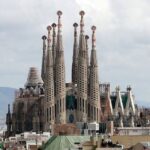 The Enigmatic Charm of Sagrada Familia: A Central Gem in Barcelona
The Enigmatic Charm of Sagrada Familia: A Central Gem in Barcelona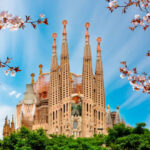 Discover the Location of Sagrada Familia in Barcelona: A Must-Visit Landmark
Discover the Location of Sagrada Familia in Barcelona: A Must-Visit Landmark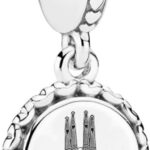 Sagrada Familia: The Epicenter of Barcelona's Charm
Sagrada Familia: The Epicenter of Barcelona's CharmIf you want to know other articles similar to What is Sagrada Familia? Exploring Barcelona's Iconic Landmark you can visit the category Blog.
Deja una respuesta

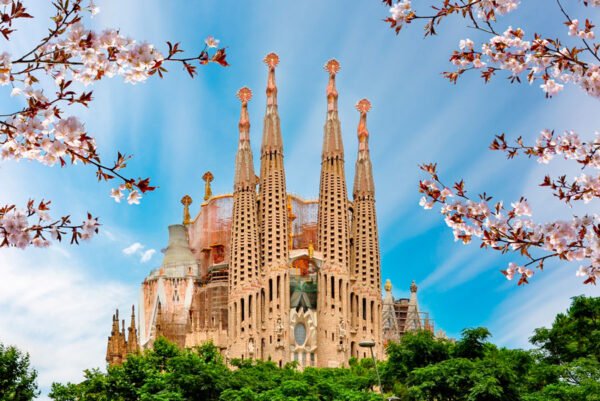
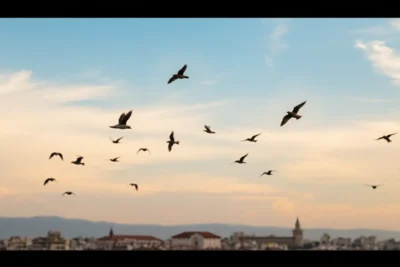



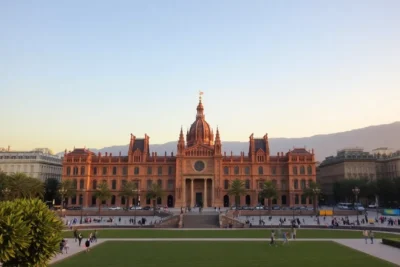

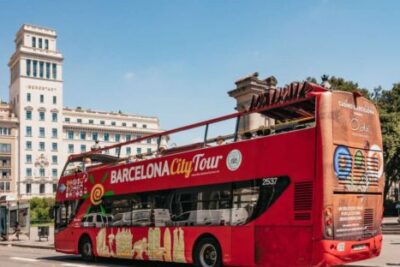
Read more!